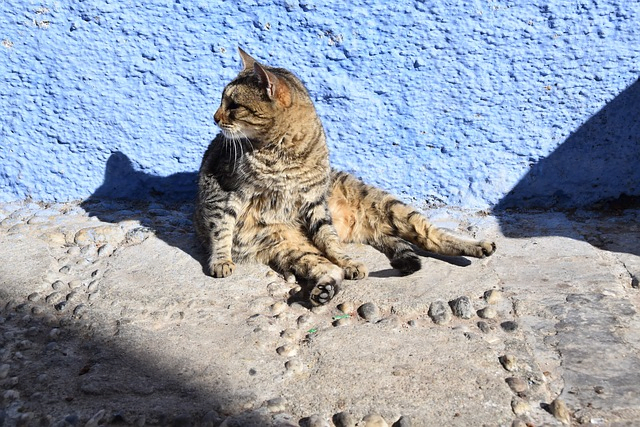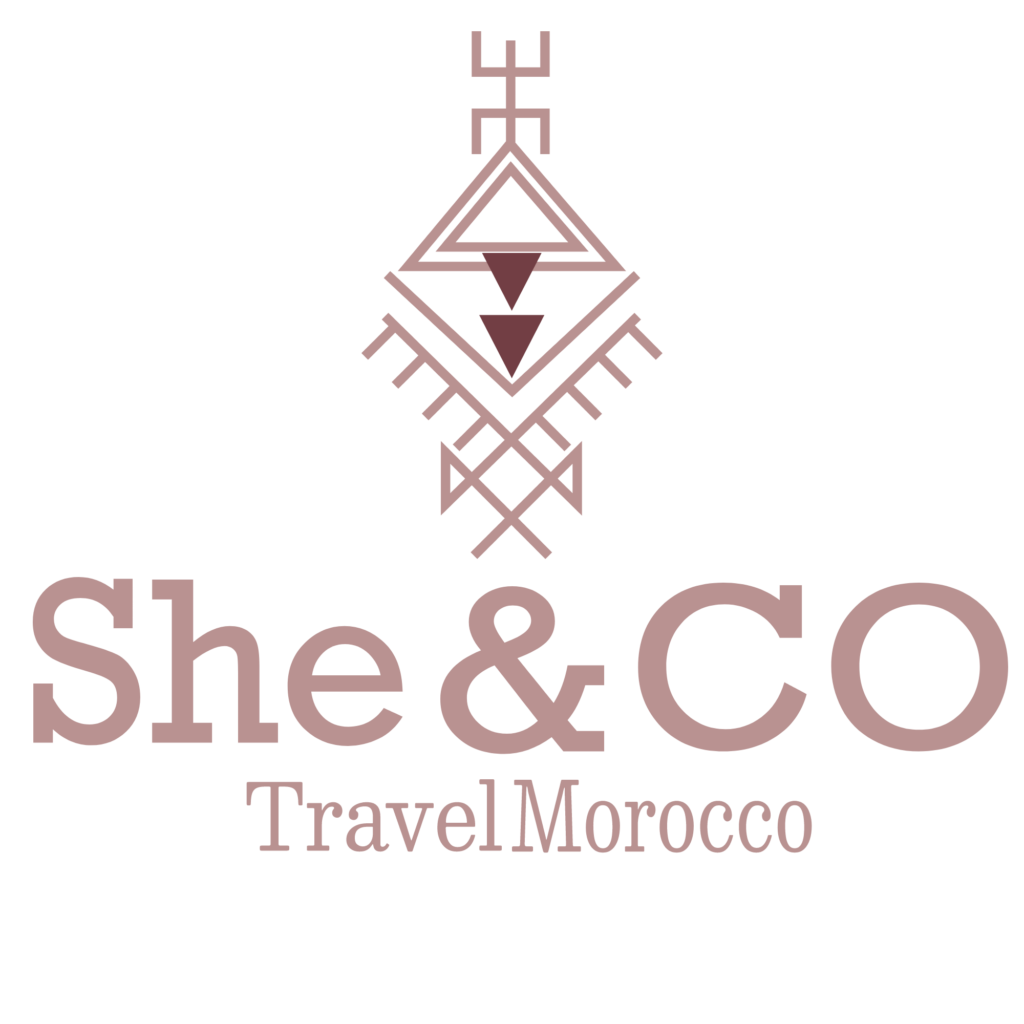Chefchaouen the blue city or The Blue Pearl is one of the most beautiful and memorable cities in the world. The blue city of Morocco on the slopes of the Rif Mountains captures the interest of travelers and especially encourages creative people and photographers to travel and visit it. In 2015, Mark Zuckerberg was inspired by the city and he used its photo for new Instagram features.
The whole secret is in the mysterious blue shades of the city. There are many stories associated with the color of the city. Some claim that the color idea belongs to the Andalusian Jews who were expelled from Spain and settled in this city. They painted the houses blue, convinced that it was the closest to the color of the sky.
Today, there are almost no Jews living in the Chefchaouen the blue city, but locals kept the tradition of updating the walls regularly with blue paint and laying colorful flower pots in the streets and next to their doors. All this creates a fabulous special atmosphere, which is certainly worth plunging into.
In addition to the blue streets, the city is surrounded by abundant natural landscapes and stunning panoramic views. Moreover, waterfalls and forests will be another attraction that you will see while walking in the picturesque mountains of the Reef.
The history of Chefchaouen the blue city of Morocco
The blue city Chefchaouen was founded in the second half of the 15th century by the Andalusian Amir Moulay Ali Ben Moussa Ben Rashid El Alami. He constructed a small Berber settlement on the site. He had chosen a strategic place. On the one hand, close to the river, on the other hand, in the impregnable high rif mountains.
The construction of Chefchaouen began with a small mosque as well as the construction of a fortress wall to defend against the Portuguese who controlled the north of the country.
Of course, there was human habitation in the area before this, and to be more specific, it was inhabited by Berber people for ages.
Later, Moriscos Muslims and Jewish who had fled Spain and Portugal sought refuge there because of persecution for refusing to convert to Christianity. This fortress became not only a protection for them but also a new home for them. That’s why there is a mixture of Moorish and Andalusian architecture in the city.
Initially, The houses and the walls of the city were white. Then the descendants of Jews introduced the tradition of painting the lower half of houses in blue at the beginning of the 20th century. Why in that specific color? There are several explanations for this.
Why Chefchaouen Morocco is blue?
There are many stories about the reasons for painting the houses blue. After asking some locals, we came up with different reasons. Some of them stated that Jews who came from Spain painted their houses in pale blue shades reminiscent of the sky to show their connection with God. Some other consider it a symbol of peace and religious tolerance for refugees forced to flee from their homes.
Another explanation, the color is an indication of the source that supplies the entire area with clean water, or it is just a normal color that keeps blood-sucking insects away and scares them.
Chefchaouen is now painted in all sorts of blue shades, and turquoise, but in most places, you will find a gently blue and white tone dominating the whole city. In the streets next to the wall, there are many vases with bright flowering plants that look very impressive.
In the beautiful streets of Chefchaouen, you can see some shops having jellabas (Berber men’s dresses made of wool with a hood), hanging on the wall, also handmade carpets, which give a great mix of color to the area. In short, The blue pearl of Morocco has hundreds of shades of blue and blue.
The famous Shades of the blue city in the northern Morocco
The city has more than 200 private home hotels with 5-6 rooms, which are called riads in Morocco.
The level of accommodation is quite modest, not higher than 4 stars. You can’t find a 5-star hotel in the blue city. However, there are many stunning authentic Riads. During your tour planning, we recommend making a stop with an overnight stay in the old Medina of the city to better feel the atmosphere.
If you are looking for an organized tour in Morocco, you only need to contact us and we will create a customized itinerary for you. We will offer you the best accommodation, the best transport, and a great experience in Morocco.
The blue pear is a small city in Morocco, and it is difficult to get lost in its old Medina. It is understandable and simple to navigate through it, unlike the old quarters in Fez or Marrakech.
Famous Attractions in the blue city of Morocco

All the sights in the Blue city are concentrated either inside the fortress walls or in its region.
We have collected interesting places in the city that you need to explore when you visit Morocco’s blue city.
Old Medina of Chefchaouen
The old Medina of the Chefchaouen the blue city is small, when you navigate through its streets, you either go up steeply, then go down sharply. It is impossible to get lost in the Medina, the whole city lies on the hills. Therefore, it is easy to locate yourself when whenever you feel that you lost your way.
The blue pearl has small hotels in the traditional style called Moroccan riads. There are significant numbers of them located in this old part. By the way, there are no hotels above class 4 stars in the city. However, there are about 200 riads here! The best Riads have their unique appearance, very cozy, authentic, and incredibly atmospheric! Every traveler visiting the country needs to experience an overnight in a Riad.
Inside the Riad, there is a garden, a fountain, and a common area. Sometimes there is a swimming pool in the middle. Some Riads are very large, they consist of multiple buildings, and each one of them has a unique design and a lot of details. Riad is different from a hotel. However, it helps to feel the authenticity of the ancient houses of Morocco.
Cascades d’Akchour Waterfalls
Cascade d’ Akcohour is a trail that leads into two waterfalls on the Rif Mountains. At this point where there is a hiking trail for tours with (climbing). You can walk to the upper side or lower side of the waterfall. During spring and summer, you can even swim in its turquoise waters.
You need a car to get to the top of the trail, and good hiking shoes for this 2 hrs walk. This trail is packed with green spaces and a stunning stone bridge as well as a lovely pool with a waterfall.
If you like active tours, but do not want to attend heavy climbing experience, Talassemtane Park is an ideal option for hiking beginners!
Go on a trek at the Talassemtane National Park
In the region of Chefchaouen the blue city of Morocco, there is one of the national parks – Talassemtane. It was founded in 2004 in response to the threats to the forests of the Rif Mountains. Talassemtane is a Berber word that refers to “Cold Spring.”
There are several hiking opportunities nearby in less than 45 minutes. It is an amazing place for people who love nature. Trees of Cacti, dates, olives, and conifers grow here, also cedars, and pine, interspersed with oaks. Moreover, the place is full of nice monkeys that love when they get food from people.
Chefchaouen Morocco Cat Spotting

If you’re a cat lover like me, you’re going to love Morocco’s blue city Chefchaouen. It’s indeed a cat city. Local people feed them. However, the majority of cats are strays and they live outside in the street.
In Chefchaouen the blue city, you’ll find cats in the souk, cats on the stairs, cats in the street, and cats next to the doors. Cats will be roaming over restaurants and on terraces. Sometimes, you will find them sleeping or sitting on chairs at restaurants. Cast usually hid in trees, scrubs, and stretched out on sidewalks.
It is easy to get the attention of cats in the blue city. Try hissing at them, It’s a great way to get them to pose for photos.
Shop Chefchaouen Street Markets
Most travelers look for the blue city of Morocco Chefchaouen to stroll aimlessly along the narrow streets & paths painted in everlasting shades: blue and white, turquoise and cyan. Moreover, explore the shop of Chefchaouen the blue city. There you can find colorful blankets and carpets, Also lanterns, and Moroccan souvenirs in the souks scattered across medinas.
Visit Chefchaouen Kasbah Fortress Museum
Make sure to have a tour of the large 15th-century Kasbah museum and dungeon situated in the central part of Morocco’s blue city Chefchaouen — Place Outa el Hammam. It’s easy to find this red-walled structure in almost any blue building.
The Kasbah is an exceptional garden and ethnographic museum. It was built by Moulay Ben Mussa Ben Rachedin in 1471. Climb the towers inside for a panoramic view of the blue city and the Grand Mosque.
The purpose of building the Kasbah was to protect Chefchaouen from Portuguese and Spanish Attacks. It was built in the Andalusian and Moroccan styles with a lot of details. This Kasbah museum is worth a visit.
Hike to the Spanish Mosque
The old Spanish Mosque was built on a hilltop overlooking a panoramic view of the blue city of Morocco. The Mosque was built by the Spanish in the 1920s. The trekk runs a mile-long along the banks of the Cacti Prickles, as well as the wonderful views of Chefchaouen the blue city of Morocco from the top.
The prayers are not held in this mosque as it was abandoned. However, it is allowed for the non-muslim community to go into the Spanish Mosque to see the buildings. Stay hydrated because on a sunny day it gets hot up there.
The route to the mosque crosses the Ras el Maa river, where you’ll observe local women washing their clothes in a traditional way using the cold mountain water. The trek takes about 45 minutes one way.
Berber Alphabet
In one of the streets of Chefchaouen Morocco, the guide will certainly show you the Berber alphabet, which is placed directly on the wall of a residential building in a form of cladding.
Many cities in Morocco have been introducing inscriptions in three languages in recent years – Arabic, Berber, and French. The alphabet is very similar to runic writing, and its origin still causes controversy among linguists!
Visit El Hammam
Hammam rituals have not changed for centuries, It is often interesting for people who never experienced it. A visit to the hammam will make you feel as if every inch of your skin and body has been upgraded because, in the Morocco Traditional hammam, you will get sweated, pummeled, steamed, and scrubbed.
The main public hammam in Chefchaouen is on the other side of the main mosque, Jama’a Kabir, and it is separated, there are different attendance times for men and women. Some hammams have two buildings. One for men and the other for women.
The main hammam ritual is to go shopping and buy your own necessary equipment such as plastic sandals, shower scrub, soap, shampoo, and towel. The hammam experience is a great way to relax after enjoying your time in Chefchaouen .

